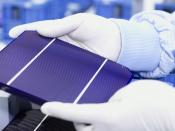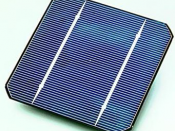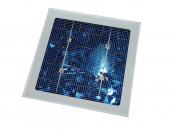Photovoltaic cells convert light energy into electricity at the atomic level. Although first discovered in 1839, the process of producing electric current in a solid material with the aid of sunlight wasn't truly understood for more than a hundred years. Throughout the second half of the 20th century, the principles underlying the photovoltaic effect have been determined and the manufacturing processes have been more fully refined. As a result, the cost of these devices has put them into the mainstream of modern energy producers. This was caused in part by advances in the technology - in which PV conversion efficiencies have improved considerably - an in part by improvements in manufacturing all the other components in a complete system.
The conversion efficiency of a PV cell is defined as the ratio of the sunlight energy that hits the cell divided by the electrical energy that is produced by the cell.
This is very important when discussing PV devices, because by affordably improving this efficiency, PV energy becomes competitive with fossil fuel sources. For comparison, the earliest PV devices converted about 1%-2% of sunlight energy into electric energy. Today's PV devices convert 7%-17% of light energy into electric energy. Moreover, today's mass produced panel systems are substantially less expensive than earlier systems.
The "photovoltaic effect" is the basic physical process through which a PV cell converts sunlight into electricity. Sunlight is composed of photons, or particles of solar energy. These photons contain various amounts of energy corresponding to the different wavelengths of the solar spectrum. When photons strike a PV cell, they may be reflected or absorbed, or they may pass right through. Only the absorbed photons generate electricity. When this happens, the energy of the photon is transferred to an electron in an atom of the cell (which is...


